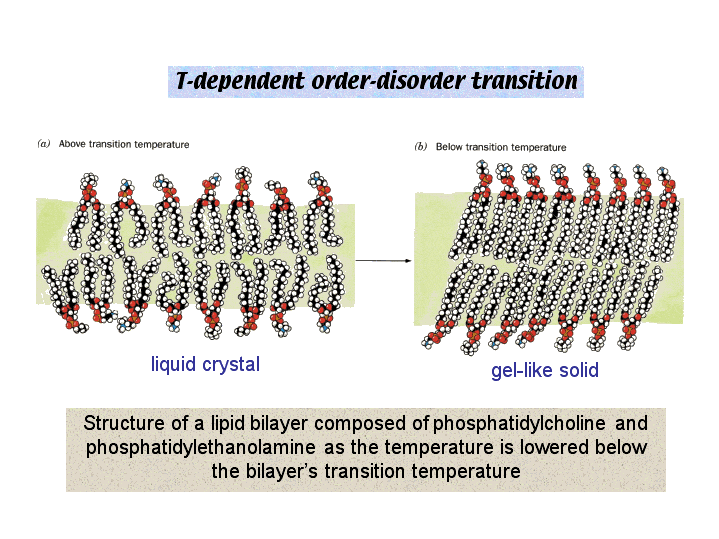The lipid bilayer, which consists of two layers of lipids (fatty acids containing a polar head group and non-polar hydrophobic tails) is a fluid structure because of the internal and outer components that allow for substances to enter and leave cells.
The transition temperature is the temperature at which a bilayer transitions from a gel-like solid to a liquid crystal.
- If the membrane is below transition temperature = gel-like structure
- If the membrane is above the transition temperature = liquid crystal

Factors That Affect The Transition Temperature:
- Length of fatty acid tails
- Longer fatty acid tailers = higher transition temperature
- Degree of saturation
- More saturation = higher transition temperature
- Presence of cholesterol
- In animal cells, the presence of cholesterol makes structures less fluid. However, cholesterol is interesting in that it broadens the transition temperature range because it is rigid (making it less fluid), but the tails of cholesterol are more disordered which makes it a plasticizer.
- A plasticizer broadens the gel transition temperature
- In animal cells, the presence of cholesterol makes structures less fluid. However, cholesterol is interesting in that it broadens the transition temperature range because it is rigid (making it less fluid), but the tails of cholesterol are more disordered which makes it a plasticizer.